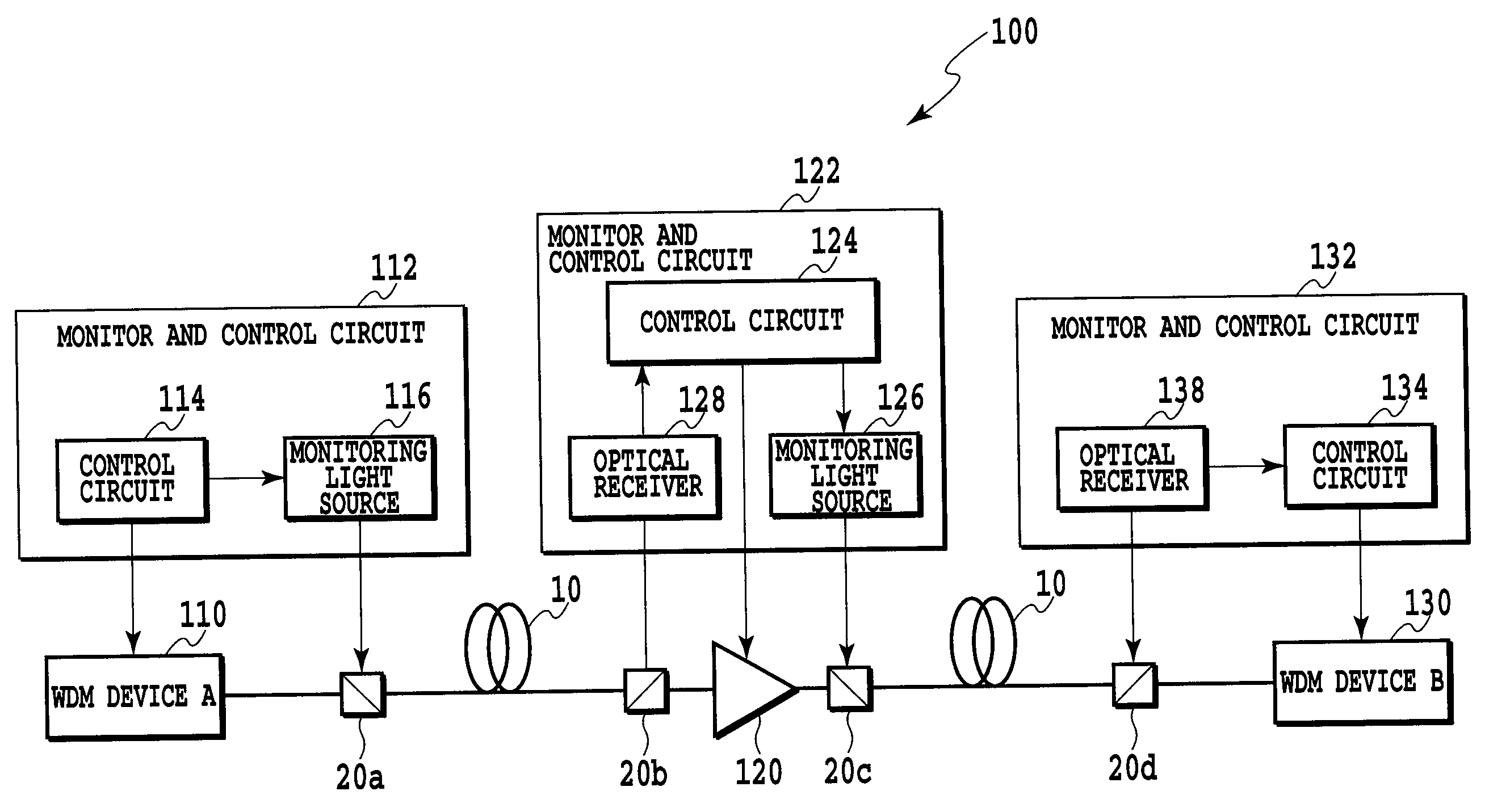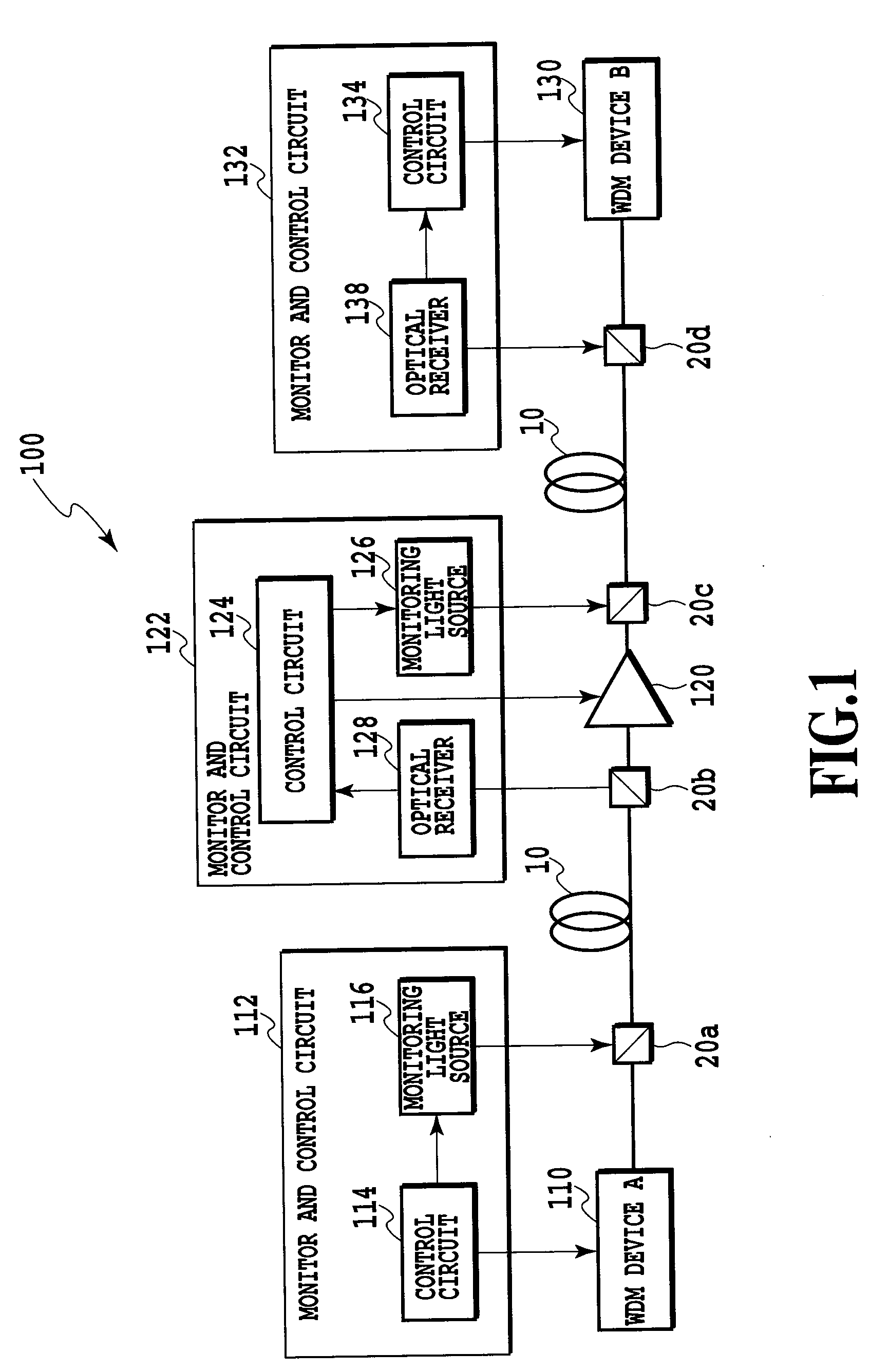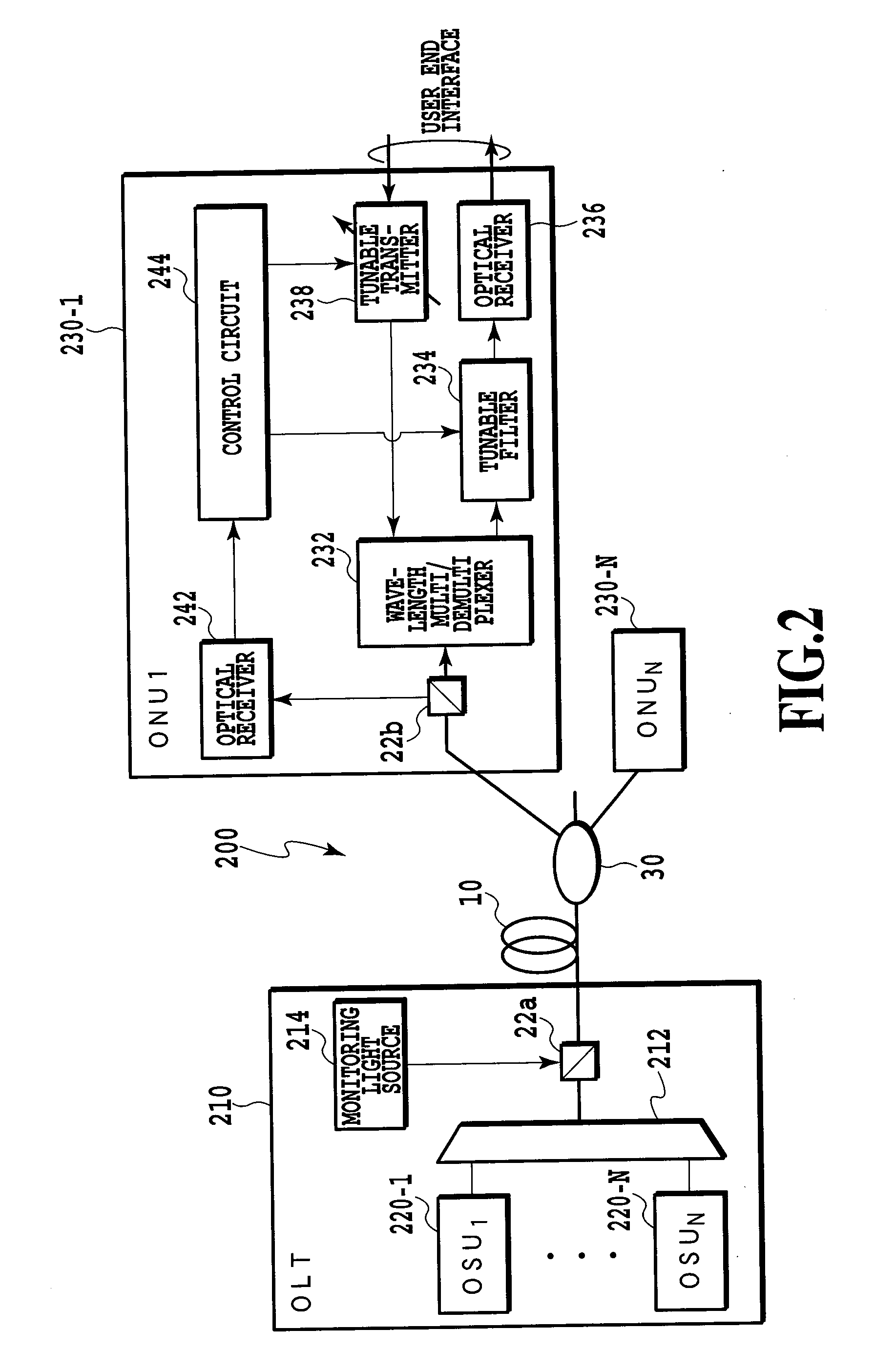Optical wavelength multiplexing access system
a wavelength multiplexing and access system technology, applied in the field of optical wavelength multiplexing access system, to achieve the effect of critical economics and advantageous network expansion
- Summary
- Abstract
- Description
- Claims
- Application Information
AI Technical Summary
Benefits of technology
Problems solved by technology
Method used
Image
Examples
Embodiment Construction
[0035]Hereinafter, embodiments of the present invention will be described in detail with reference to the drawings.
[0036]FIG. 3 shows an exemplary configuration of a star-type network using an optical TX / RX device according to the present invention. Network 300 is composed of an optical line terminal (OLT) 310 for transmitting and receiving wavelength-multiplexed signal light, an optical fiber 10 through which the signal light propagates, a power splitter 30 for combining or splitting the optical signal with 1 to N, and N optical network units (ONUs) (optical TX / RX devices) 330-1 to 330-N each transmitting and receiving optical signal.
[0037]OLT 310 comprises N optical subscriber units (OSUs) 320-1 to 320-N each transmitting and receiving signal light with an assigned wavelength, a wavelength control circuit 314 for controlling the wavelengths of signal light used for TX and RX by the OSUs, and a wavelength multi / demultiplexer 312 for multiplexing the optical signals from the OSUs an...
PUM
 Login to View More
Login to View More Abstract
Description
Claims
Application Information
 Login to View More
Login to View More - R&D
- Intellectual Property
- Life Sciences
- Materials
- Tech Scout
- Unparalleled Data Quality
- Higher Quality Content
- 60% Fewer Hallucinations
Browse by: Latest US Patents, China's latest patents, Technical Efficacy Thesaurus, Application Domain, Technology Topic, Popular Technical Reports.
© 2025 PatSnap. All rights reserved.Legal|Privacy policy|Modern Slavery Act Transparency Statement|Sitemap|About US| Contact US: help@patsnap.com



